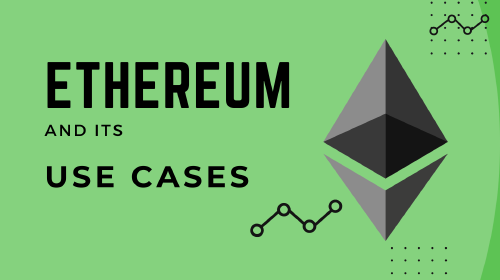Blockchain vs Database: Key Differences Explained
Salomon Kisters
Apr 13, 2021This post may contain affiliate links. If you use these links to buy something we may earn a commission. Thanks!
If you’ve heard of Bitcoin, then you are probably familiar with Blockchain, a technology that is touted as the answer for just about every transaction issue facing the world today. Because of how popular it has become in recent years and its diverse applications, many people who are newbies to the technology often ask if there is any difference between a Blockchain and a database since they share a number of striking similarities.
These traits make a lot of people refer to a Blockchain as ‘just another database’, and that its attributes can be accomplished with the conventional, tried-and-true technology. The cynics opine that the only difference between a Blockchain and a database is the hype associated with the former.
However, a Blockchain is more than just a database, and you will see the difference shortly. This article aims to give a detailed comparison of a Blockchain vs. Database. To understand the difference between these two concepts, it is worth considering what they are and how each of these is designed and maintained.
What is a Blockchain?
Blockchain is a distributed ledger technology (DLT) that stores information in a data structure called blocks. It is a ledger that enables peers to store chunks of bundled information in uniformly sized blocks that is distributed to a cluster of computers not owned by a single entity.
In other words, in contrast to traditional database architectures, a Blockchain is a decentralized network that holds information of all events and transactions entered on to it, and the data stored on the network is verified from all other users available on the network. This makes the Blockchain the very definition of a democratized system since it uses a peer-to-peer (P2P) architecture.
Each block on the network stores the hashed information from the previous block, meaning all the blocks are linked to each other. The hash is essentially the information that uniquely identifies a block. The Blockchain hashing uses SHA256 hashing algorithm, which is a one-way hash function.
A Blockchain data structure is an excellent example of a merkle tree, which is used as an efficient way to verify data. Once a block has been added to the chains of blocks, the information is immutable and transparent to all.
What is a database?
Having explained the idea of Blockchains, let’s proceed to explaining what databases are. A database is a kind of central ledger that is run by an administrator, who has the rights to read, write, update and delete information on the ledger. The database is essentially a data structure that allows organizations to store and work with data.
The first-ever architecture of databases was based on a hierarchical style that made it possible to collect and store data. Today, data have become complex and a typical database uses the client-server architecture, with the clients being the users of a service that requests access to data and this runs through a server that hosts the database. Thus, a user can add or modify data stored on the server but this is happens only when the client’s credentials have been authenticated by the administrator and access has been granted.
Examples of a database under the control of a trusted, central authority are the confidential records of a hospital, the ledgers used in banks and the business data of an organization. The most notable characteristic of a database is that it is a centralized network.
Advantages of using Blockchains
Here are some of the key benefits that come with using Blockchains:
- Time reduction: One of the biggest attractions to Blockchains in the finance industry is that it helps to drastically cut down the amount of time required to send or receive money from anywhere in the world. Sending money through the traditional banking industry takes a lengthy process for verification, settlements and clearance – all of which can be time-consuming. With Blockchain, transactions take place almost in an instant.
- Unchangeable transactions: Every transaction that is recorded on Blockchains is final and cannot be changed. This is because the network is designed to allow for only insertion of data, which means when a new block is added to the chain; it cannot be modified or removed.
- Transparency: The Blockchain is an open ledger that allows everyone to view and verify transactions without the help of an intermediary. This helps to foster trust in the system.
- Security: The Blockchain uses advanced cryptography to make sure that the information is locked inside the chain. Each block on the network also has the hash of the previous block, further making it tamperproof. As stated earlier, Blockchain adopts Distributed Ledger Technology, which provides every user in the network with a copy of the original chain so the system remains active even if a large number of nodes fall.
- Versatility: Contrary to widespread assumptions, a Blockchain isn’t necessarily accessible to everyone. There are different types of Blockchain: private, public and hybrid. This allows organizations to decide the type of Blockchain that suits their overarching goal.
- Overhead/cost reduction: Having a decentralized network of nodes means organizations can cut down on their budget for expenses like hosting, security, maintenance, IT staffing, infrastructural overhead and more.
- Decentralized: What makes Blockchain a revolutionary technology is that there no single authority supervising the network, meaning there are no middlemen or administrators. Everyone in the system is equal and the network has standard rules on how every node exchanges the Blockchain information.
Advantages of traditional database architectures
The database technology has soared in popularity for a variety of reasons including:
- Customizable: When it comes to which technology between Blockchain and database offers more flexibility for customization, database wins hands down. Since traditional databases are managed and controlled centrally, permissions, privileges and set-up requirements can be optimized. Plus, the data can easily be relocated anywhere, thanks to the relational architecture and backup practices.
- Stability: Another upside of database technology is that it can tolerate high volumes of transactions per seconds since permissions are centralized and the administrator(s) have the power to update data. The client-server architecture eliminates the need for nodes and replaces them with standalone centers.
- Deliver speed: One of the issues with traditional databases is that they can be quite slow. However, there has been a lot of advancement over the years to suit faster delivery times and high-end analytical operations. Big data analytics is a case point.
- Backup: It provides backup and recovery subsystems, which create an automatic backup of data so business data remains intact in the event of natural disasters, software failure, human error and more. Backup makes it easy to retrieve data if and when required.
- Multi-user interface: Another way databases win in the Blockchain vs. Database debate is that they provide different types of user interfaces like graphical user interfaces and application program interfaces.
Blockchain vs. Database: The differences
Having defined and explained what a Blockchain and a database are with their advantages, let us now proceed to how they differ. Here are the major differences between both technologies.
A Blockchain is decentralized
Centralization is the biggest difference between Blockchains and databases. Traditional databases are centralized in that they physically run on one server and users can’t download them. The database control remains with the designated authority, which authenticates the credentials of the client before granting access to the database. Hence, the powers to run and manage the database are in the hands of a single person or a few people.
In contrast, Blockchains are designed to run with the input of every user of the network. In other words, peers in the system can share information with each other without requiring the supervision or approval of a central administrator. For any information to be added to a block, the majority of the nodes of the blockchain must reach a consensus. This consensus is what guarantees the security of the blockchain network, making it difficult to tamper with.
A Blockchain operates as a peer-to-peer network
Another notable point in the Blockchain vs. Database argument is the type of architecture each uses. For instance, traditional databases use a client/server architecture, which has so far proven to be suitable for both small and large-scale businesses. In this model, the clients operate like users or consumers whereas the server performs like a producer. Thus, clients can request and receive service from a server, which acts as a centralized processing unit.
Blockchain, on the other hand, uses distributed ledger technology architecture. What this means is that it operates as a peer-to-peer network, where each peer can connect with another using secure cryptographic protocols. Each peer has a copy of the original chain, thus serving as a kind of server (called nodes) for the blockchain network that validates the block of transaction. Each blockchain node can also perform mining operations or do both.
A Blockchain can be permissions-less
Compared with Blockchains, databases run on permissions. The administrator of the database can define the ‘users’ that can communicate with the database. Clients trying to access databases must fit the criteria of the ideal user as determined by the administrator. As a result, a database is designed to set a limit to the number of people that can access the database as a user has to meet the right conditions to access any or add any information to the database.
Blockchain can simply be referred to as permission-less network as there are no rules that determine who the ideal user is. Anyone can access the Blockchain and view the information on it whenever they want to. Although there are different types of Blockchains and the rules guiding them determine who can see or add information. Generally, participants in public blockchain networks network can instantly access the Blockchain data whenever they want to.
Blockchains are append-only
Databases are designed to allow for addition, editing and deletion of information. However, it doesn’t that way with a Blockchain. When data is added to a block, it cannot be modified, edited or removed from the chain. The information gets tacked onto the entire chain in such a way that there is a historical record of everything that has been stored on the data. In other words, compared to databases, Blockchains have only insert operations and whatever is added to it becomes immutable and transparent to all.
A Blockchain has higher security
Security is a major drawback to databases any database product as the information stored onto a database is not safe. Except the entire structure is standardized and closely monitored, hackers may leverage a single security loophole to illegally access sensitive data and sabotage the operations of the enterprise.
When debating Blockchain versus database, the former wins in this department as it is very secure. Rather than rely on a central server, Blockchain works by providing each node with a copy of the chain for validating blocks. Where there is a consistency from a node, the technology will identify the abnormality and automatically correct any unreliable information.
To further buttress how Blockchain shines in the Blockchain vs. Database with regards to security, consider this scenario. If a peer on the network goes rogue and decides to manipulate data on the network, the network will readjust itself based on the copy of chain with every other node. For a rogue peer to tamper with network they must have at least 51 percent of the nodes, and this is almost impossible due to massive amount of computing resources required to pull it off. This makes the security of a blockchain extremly strong.
A Blockchain is more fault tolerant
Another major difference between both technologies is in their fault tolerance. If the administrator of a database is unavailable, operations can easily be disrupted. Similarly, if the server goes down, business operations may grind to a halt.
Blockchain is a very fault tolerant technology as its uptime isn’t reliant on a few servers but on thousands of nodes across the world. Even if a few hundred nodes are switched off, the blockchain network will continue to operate just fine.
All-in-All
Blockchain can be considered to be a type of database in that it can store information but it is wrong to assume that it like a regular database. The differences between a Blockchain and a database are very glaring, and their peculiarities enable them to suit different use cases.
In effect, what matters isn’t which tech wins the Blockchain vs. Database war but how relevant they are to your goals. It is critical for every enterprise to understand what it wants before it decides to go for either a Blockchain or a traditional database.
Stay informed with the latest insights in Crypto, Blockchain, and Cyber-Security! Subscribe to our newsletter now to receive exclusive updates, expert analyses, and current developments directly to your inbox. Don't miss the opportunity to expand your knowledge and stay up-to-date.
Love what you're reading? Subscribe for top stories in Crypto, Blockchain, and Cyber-Security. Stay informed with exclusive updates.
Please note that the Content may have been generated with the Help of AI. The editorial content of OriginStamp AG does not constitute a recommendation for investment or purchase advice. In principle, an investment can also lead to a total loss. Therefore, please seek advice before making an investment decision.

Protect Your Ideas Using Blockchain Technology: A Comprehensive Guide
A Comprehensive Guide - Learn how to safeguard your intellectual property with blockchain technology to prevent theft and secure ownership.

How to Learn About Blockchain Technology
Literature about Blockchain technology is everywhere. Here is an overview of recommended books and courses that help you to learn about blockchain technologies.

Ethereum: Decentralized Blockchain Platform & Use Cases
Learn about Ethereum, a decentralized blockchain platform with smart contract functionality. Explore its use cases, how to buy Ether, and the benefits of OriginStamp.
Protect your documents
Your gateway to unforgeable data. Imprint the authenticity of your information with our blockchain timestamp